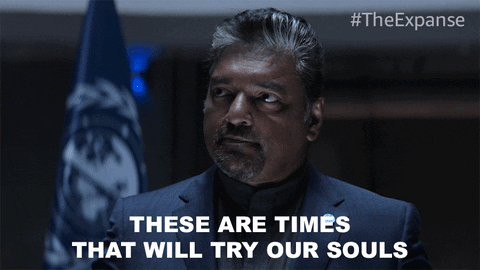📉 Why Do So Many Projects Fail? And What If They Didn’t Have To?
Spy Wednesday Dispatch | April 16, 2025
Today is Spy Wednesday — the day Judas struck the deal.
The betrayal began not with a kiss, but with a quiet transaction behind closed doors.
The name actually derives from the Gospel reading for today — also called Holy Wednesday, as it is the Wednesday of Holy Week — in which Judas Iscariot betrays Jesus for thirty pieces of silver:
“Then went one of the twelve, who was called Judas Iscariot, to the chief priests. And said to them: What will you give me, and I will deliver him unto you? But they appointed him thirty pieces of silver. And from henceforth he sought the opportunity to betray him.”
— Matthew 26:14–16 (Douay-Rheims)
At that point, Judas “spies” on Jesus — secretly plotting the most opportune time to turn Him in.
We like to think betrayal is dramatic. Obvious.
But in real life — and in project life — it’s usually quieter.
Boardroom-quiet. Status-report-quiet.
And so we arrive at the question that’s haunted me for years:
Why do so many IT projects fail?
And why does no one really want to fix it?
The Numbers Are Worse Than You Think
Most people quote the old Standish Group numbers.
But here's what the deeper data tells us:
Only 2.5% of companies complete their IT projects successfully.
The rest? Delivered late. Over budget. Or dressed up to look finished.
Often, the project team knows the truth.
So does the PM.
But by then, the real sponsor is missing, the vendor is spinning, and leadership just wants the slide deck.
We’ve normalized failure.
We’ve ritualized it.
We’ve even rebranded it as Agile maturity or transformation in progress.
“Woe to you that call evil good, and good evil: that put darkness for light, and light for darkness.”
— Isaias 5:20
What Really Fails in a Failed Project?
Not the technology.
Not the people.
Not even the process.
What fails — most of the time — is truth.
The truth about what’s actually possible.
The truth about who owns the outcome.
The truth about risk, resource, readiness.
And when truth goes, everything else bends with it:
timelines, budgets, morale, conscience.
This Is a Moral Problem, Not a Methodology One
We’re not lacking tools.
We’re lacking courage.
And command.
We need fewer consultants.
We need more officers — people willing to hold the line, tell the truth, and steer the thing home.
“To recoil before an enemy, or to keep silence when from all sides such clamors are raised against truth... is the part of a man who betrays his duty.”
— Pascendi Dominici Gregis, Pope St. Pius X
But here’s the part that keeps me up some nights:
Maybe we’ve been betrayed.
Not by individuals, but by systems that pretend to care about delivery — but really just want control, or compliance, or cover.
What If Project Failure Isn’t Inevitable?
What if the 2.5% isn’t a ceiling — but a signal?
What if we could make projects succeed again — not by adding another framework, but by recovering moral and operational clarity?
What if we had a doctrine?
Not a silver bullet.
But a posture. A principle. A way to stand when others bend.
“Watch ye therefore, praying at all times, that you may be accounted worthy... to stand before the Son of man.”
— Luke 21:36
I believe I have that doctrine, that credo that can be used to recover that moral and operational clarity. I’ll share what I’ve been building — soon.
But for now, I leave you with the same silence the apostles felt as Judas slipped into the night.
Spy Wednesday is the day when betrayal gets official.
But the Cross is coming.
And after it, resurrection.
Let’s be the ones who don’t look away.
— Captain Mabro
Rocinante Method Actual






